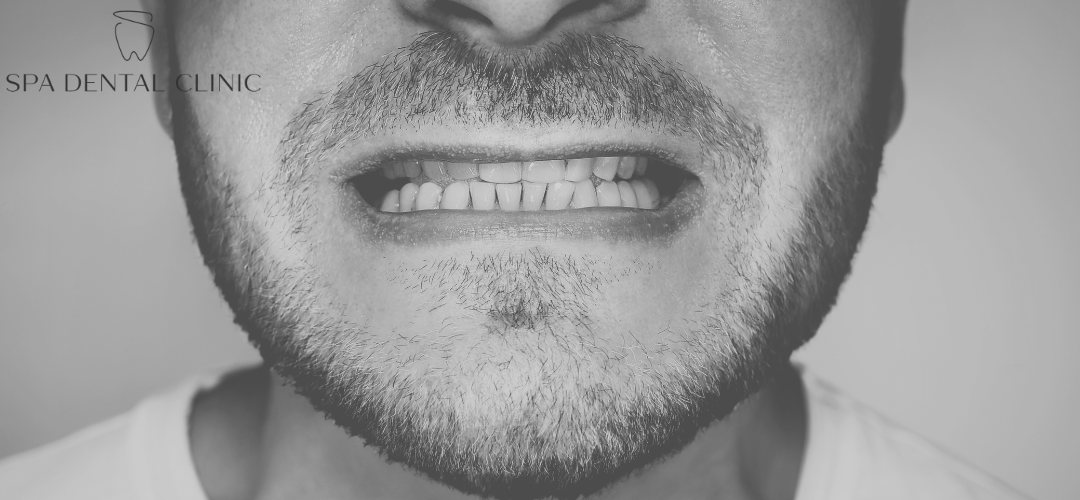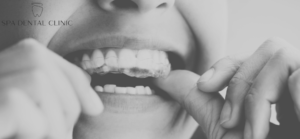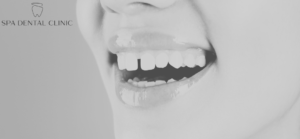Underbite vs Overbite What’s the difference and how to fix an underbite
If you’ve ever wondered about underbite vs overbite, you’re not alone. These bite patterns are common, and while they might seem similar, they affect your smile — and your jaw — in different ways.
At Spa Dental Clinic, we help patients every week who want to understand and correct bite issues for a healthier, more balanced smile. This article explains what an underbite is, how it differs from an overbite, what causes it, and how treatments such as underbite braces or Invisalign can help.
We’ll also look at the effects of underbite teeth on your oral health, what results you can expect, and why seeking early treatment is so important.
What is an underbite?
An underbite occurs when the lower teeth sit in front of the upper teeth when you bite together. Instead of your top teeth slightly overlapping your lower ones (which is normal), the opposite happens.
Underbites can range from mild — where the lower teeth are just slightly forward — to severe, where the lower jaw is much more prominent.
Common causes of an underbite:
✔ Genetics (inherited jaw shape or size)
✔ Early childhood habits like thumb sucking or tongue thrusting
✔ Prolonged dummy use or bottle feeding
✔ Injury or trauma to the jaw
✔ Growth imbalances between the upper and lower jaws
Having an underbite doesn’t just affect how your smile looks — it can also impact chewing, speech, and even jaw comfort.

Overbite vs underbite: the key difference
While both are forms of malocclusion (bite misalignment), the direction of the overlap is what sets them apart.
✔ Overbite: The upper teeth overlap the lower teeth vertically.
✔ Underbite: The lower teeth extend forward in front of the upper teeth.
Understanding underbite vs overbite helps your dentist or orthodontist recommend the right treatment approach. Some people may even have a mix of both, depending on how their jaws and teeth have developed.
If you’re interested in learning more about overbites, take a look at our detailed article What is an overbite and how can you fix it?.
Why underbite teeth can be a problem
Mild underbite teeth may only affect appearance, but more pronounced cases can lead to several functional and health issues, such as:
✔ Uneven wear on teeth
✔ Difficulty biting or chewing
✔Jaw discomfort or pain
✔ Speech challenges (like lisping)
✔ Higher risk of tooth damage or gum issues
Over time, the imbalance caused by an underbite can also affect facial structure and self-confidence. Correcting it early can help prevent more complex dental or joint issues later on.
Underbite vs overbite: which is more serious?
Neither condition should be ignored, but an underbite often needs earlier attention because of the extra strain it places on the jaw joint (TMJ).
An overbite can sometimes be corrected with minor orthodontic adjustments, whereas a severe underbite may require a combination of orthodontics and other dental treatments.
That’s why it’s important to get a professional assessment. At Spa Dental Clinic, we use digital scans and bite analysis to see exactly how your teeth and jaws fit together before recommending a treatment plan.
How braces and Invisalign can fix an underbite
If you’re wondering whether underbite braces or aligners can help, the answer is yes — in most cases. Modern orthodontic treatments can correct the position of your teeth and improve jaw alignment without the need for surgery in mild to moderate cases.
Here’s how it works:
| Treatment | How it helps underbite teeth | Typical timeline |
|---|---|---|
| Traditional braces | Gradually move teeth and adjust bite | 12–24 months |
| Invisalign clear aligners | Correct mild to moderate underbite discreetly | 6–18 months |
| Surgical orthodontics | Used for severe jaw discrepancies | Case-dependent |
| Retainers | Maintain results after braces or aligners | Ongoing |
Modern clear aligners, like Invisalign, are popular for their comfort, appearance, and flexibility. They’re particularly effective for mild to moderate underbite teeth.
At Spa Dental Clinic, we’re certified Invisalign providers and can show you a 3D simulation of your future smile before treatment even begins.
What happens during underbite braces treatment
Your dentist or orthodontist will start with a detailed consultation and 3D scan of your teeth. From there, a step-by-step plan is created to gradually move your teeth into their correct position.
Step-by-step process:
1. Consultation and records – Digital scans, photos, and X-rays to assess your bite.
2. Treatment planning – Your dentist explains how your teeth will move and what to expect.
3. Wearing braces or aligners – Teeth shift gradually over several months.
4. Regular reviews – You’ll visit the clinic every few weeks to check progress.
5. Retainers – After treatment, retainers keep your new smile stable.
With clear aligners, such as Invisalign, you’ll typically wear each set of trays for one to two weeks before switching to the next. Most patients complete treatment in under 18 months.
Why patients trust Spa Dental Clinic
Our dental team has extensive experience treating both underbite and overbite cases, from mild alignment tweaks to complex orthodontic treatments.
We use the latest 3D digital scanners and orthodontic planning software to ensure precise, predictable results.
As a trusted local practice offering Invisalign braces in Cheltenham, we follow evidence-based orthodontic methods approved by leading dental authorities.
You’ll always receive honest advice about your options, treatment times, and costs, with no pressure to decide on the spot.
Can Invisalign fix an underbite?
Yes, in many cases it can. Invisalign can gently guide teeth into a better position without fixed brackets or wires.
Mild and moderate underbite teeth respond well to this method, particularly when the issue is dental rather than skeletal (jaw-related).
During your consultation, we’ll assess whether clear aligners or underbite braces are more suitable for your case. You can find more about how Invisalign works on the official Invisalign UK website.
Underbite and facial appearance
An underbite can sometimes make the lower jaw appear more prominent, affecting overall facial balance. Straightening your teeth and improving your bite can have a subtle but noticeable effect on your facial profile — especially when combined with good posture and healthy oral habits.
Many patients find that correcting an underbite gives their face a softer, more harmonious look and boosts confidence.
What happens if you don’t fix an underbite?
Leaving an underbite untreated can lead to long-term dental and joint problems, including:
✔ Accelerated tooth wear
✔ Jaw joint discomfort (TMJ pain)
✔ Speech difficulties
✔ Increased risk of tooth chipping
✔ Difficulty cleaning between teeth due to crowding
The earlier an underbite is addressed, the simpler treatment tends to be. Even adults can achieve great results with modern orthodontics.
Costs and treatment options
At Spa Dental Clinic, we provide transparent pricing for all treatments, including braces and Invisalign. Costs depend on the complexity of your case and the duration of treatment.
To get a personalised quote, you can book a consultation through our Invisalign braces page.
We’ll discuss your options clearly and help you choose between aligners, braces, or combined treatments — always focusing on your comfort, results, and budget.
Final thought
Whether your concern is cosmetic or functional, correcting an underbite can make a big difference to both your smile and your comfort. Understanding overbite vs underbite helps you recognise the signs early and choose the right treatment before issues worsen.
At Spa Dental Clinic, we use advanced digital orthodontic planning and proven methods like Invisalign braces to correct underbite teeth safely and predictably.
If you’re ready to find out which option is right for you, book a consultation today and take the first step towards a confident, balanced smile.


